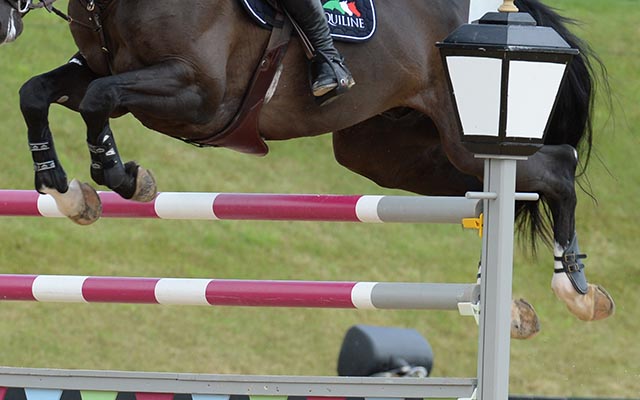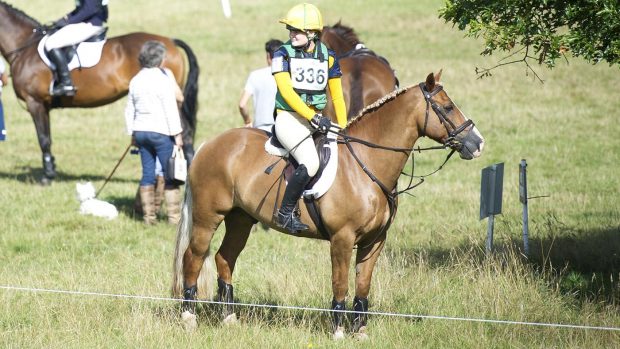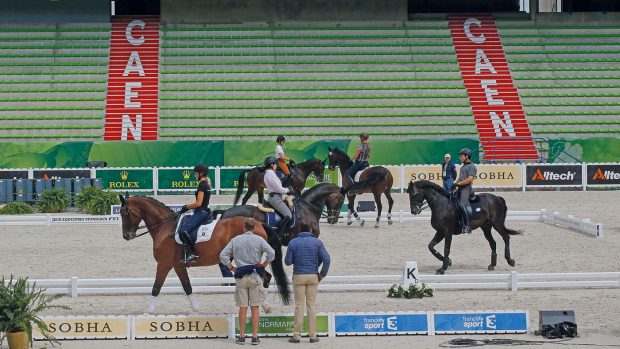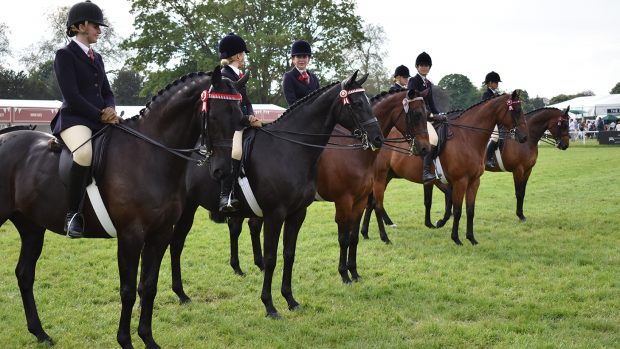When the pressure is on and the collecting ring is busy, knowing what to do and implementing it can be daunting. We asked former European champion Rachel Bayliss to give us her tips
The dressage
“It sounds obvious, but no two horses are the same and riders have to adapt their warm-up to suit their mount,” says Rachel. “The warm-up isn’t the place to iron out new problems, but if you’re aware that something isn’t working find out how to improve it.
“Remember that every rider tries hard to have a successful day, so be considerate. It’s easy to get wrapped up in what you’re doing and cut up other horses. Always be polite — especially to stewards — no matter how bad things are going.”
Rachel’s tips for… the dressage
➤ When you collect your number, find out how long it will take to get to the dressage area. It’s better to have 10min in hand. Running late means stress for you and the horse.
➤ Before you start working in, find out which arena is yours.
➤ Make time to stand and watch a test in your arena to ensure you have learnt the correct one.
➤ Always pick up your dressage sheet to check that what you’re feeling matches what the judges see.
➤ Remember that each dressage movement is like a showjump or cross-country fence — they have to be done, so be accurate.
➤ Assess where the marks come from — sometimes a 10 is earned just for making a turn and halting. If you mess something up, forget about it. The next few strides could earn another 10 marks.
Continued below…
Do you suffer from competition riding nerves? Find out how to take control and use nerves to improve your performance

10 tips to banish competition riding nerves

Subscribe to Horse & Hound magazine today – and enjoy unlimited website access all year round
The showjumping
Knowing how long to warm up for the showjumping can be difficult to gauge.
“The first thing to do when you get to the collecting ring is find out whether things are running to time,” says Rachel. “There is no point being ready to go only to have to hang around for another half an hour while your horse gets bored and you switch off.”
There are two common errors that Rachel witnesses in this phase: riders overjumping their horses or having a lesson in the warm-up area.
“You’re not going to transform a horse in the warm-up, so don’t try to,” she says.
“Having a helper is very useful, though, and many riders do find that having someone giving pointers gives them confidence.”
Often the warm-up ring can become busy and subsequently get chaotic.
“A lot of riders don’t really know what they are doing and get anxious because they’re not used to working with others who do. It’s easy to be fazed by professionals taking over a fence, but you have every right to be there, too. Take your time and do what you need to.”
Rachel’s tips for… the showjumping
➤ Often riders don’t get a chance to walk the showjumping course. If you don’t, walk around the edge of the arena looking at the fences to work out your line.
➤Go through the course in your mind to make sure you can remember it. Once it’s in there you won’t forget it.
➤If there is a long period between your dressage and showjumping times, allow an extra 20min or so to warm up on the flat. Don’t overjump your horse.
The cross-country
“You can’t just float from the showjumping to the cross-country. It’s important that both horse and rider get into cross-country mode in both body and mind, so you have to make a clean break,” says Rachel.
This starts before you get on — changing your kit, shortening your stirrups and changing studs if necessary.
Begin by establishing a good quality canter in a forward rhythm.
“It doesn’t need to be fast or for a long time. The aim is to get the horse thinking forward and in front of your leg,” says Rachel.
She suggests that you try to achieve a more open jump compared with the showjumping and, once you have cleared the fence on both reins, try riding it at an angle and off a turn.
“This makes sure the horse is switched on and listening to you,” says Rachel.
“Aim to have no more than three horses left to go before you. Then you have time to catch your breath, check your girth is tight and that the stirrups are still sitting properly on the bars of the saddle before heading off to the start.”
Rachel’s tips for… cross-country
➤ If you are riding multiple horses, write each name on their number so you don’t get confused. Keep all the numbers in your bib and change the order as needed, then you will never find yourself without one.
➤Make sure everything is as you want it. It’s very easy to get down to the start only to be told you’ve forgotten something. Eliminate unnecessary stress by sorting your kit into a pile in the lorry so it’s ready to grab.
➤ When you arrive at the cross-country warm-up, find out if it is running to time.
“As with the showjumping there is no point having your horse ready to go only to discover there’s 15 more horses before you. It’s very frustrating,” adds Rachel.



